China remains the top military and cyber threat to the US and continues to make progress on capabilities to seize Taiwan, a report by US intelligence agencies said on Tuesday.
The report provides an overview of the “collective insights” of top US intelligence agencies about the security threats to the US posed by foreign nations and criminal organizations.
In its Annual Threat Assessment, the agencies divided threats facing the US into two broad categories, “nonstate transnational criminals and terrorists” and “major state actors,” with China, Russia, Iran and North Korea named.
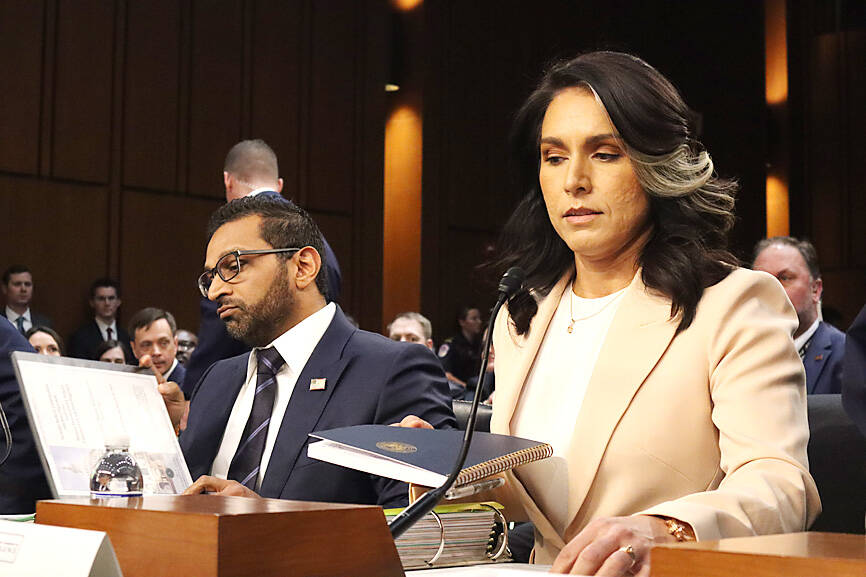
Photo: CNA
Of those countries, “China presents the most comprehensive and robust military threat to US national security,” the report said, adding that China was more “cautious” than Russia, Iran and North Korea about appearing “too aggressive and disruptive.”
Beijing’s “coercive pressure” against Taiwan and “wide-ranging cyberoperations against US targets” were indicators of its growing threat to US national security, the report said.
“China’s military is fielding advanced capabilities, including hypersonic weapons, stealthy aircraft, advanced submarines, stronger space and cyberwarfare assets, and a larger arsenal of nuclear weapons,” US Director of National Intelligence Tulsi Gabbard said in testimony about the report to the US Senate Intelligence Committee.
While China would like to maintain positive ties with the US, it is also building up its military capabilities, in part “to gain advantage in the event of a military conflict with the United States” over China’s efforts toward unification with Taiwan, Gabbard said.
The report warned that a conflict between China and Taiwan would disrupt US access to trade and semiconductor technology critical to the global economy.
“Even without US involvement in such a conflict, there would likely be significant and costly consequences to US and global economic and security interests,” it said.
China is likely making “steady, but uneven” progress on capabilities it would use to seize Taiwan and deter or defeat US military intervention, it said.
Beijing would continue to pressure Taiwan with “economic coercion” and would probably increase it if it sees Taiwan taking steps toward formal independence, the report said.
Among possible moves by China to boost its coercion tactics were suspending preferential tariff terms, selectively banning Taiwanese imports and arbitrarily enforcing regulations, it said.
Despite its growing capabilities, China also faces “daunting” challenges, including corruption, demographic imbalances, and fiscal and economic struggles, which would impair its leaders’ strategic and political achievements, the report said.
China would keep expanding its “coercive and subversive malign influence activities” to weaken the US internally and globally, it said.
The Chinese government would seek to counter what it sees as a “US-led campaign to tarnish Beijing’s global relations and overthrow” the Chinese Communist Party, it added.
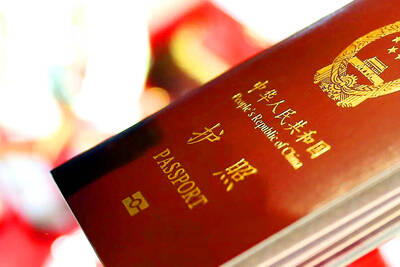
The Ministry of the Interior (MOI) is to tighten rules for candidates running for public office, requiring them to declare that they do not hold a Chinese household registration or passport, and that they possess no other foreign citizenship. The requirement was set out in a draft amendment to the Enforcement Rules of the Public Officials Election and Recall Act (公職人員選舉罷免法 ) released by the ministry on Thursday. Under the proposal, candidates would need to make the declaration when submitting their registration forms, which would be published in the official election bulletin. The move follows the removal of several elected officials who were
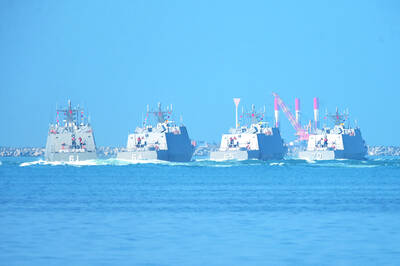
FOUR DESIGNATED AREAS: Notices were issued for live-fire exercises in waters south and northwest of Penghu, northeast of Keelung and west of Kaohsiung, they said The military is planning three major annual exercises across the army, navy and air force this month, with the navy’s “Hai Chiang” (海強, “Sea Strong”) drills running from today through Thursday, the Ministry of National Defense said yesterday. The Hai Chiang exercise, which is to take place in waters surrounding Taiwan, would feature P-3C Orion maritime patrol aircraft and S-70C anti-submarine helicopters, the ministry said, adding that the drills aim to bolster the nation’s offshore defensive capabilities. China has intensified military and psychological pressure against Taiwan, repeatedly sending warplanes and vessels into areas near the nation’s air defense identification zone and across
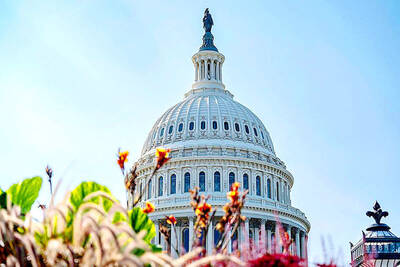
SENATE RECOMMENDATION: The National Defense Authorization Act encourages the US secretary of defense to invite Taiwan’s navy to participate in the exercises in Hawaii The US Senate on Thursday last week passed the National Defense Authorization Act (NDAA) for Fiscal Year 2026, which strongly encourages the US secretary of defense to invite Taiwan’s naval forces to participate in the Rim of the Pacific (RIMPAC) exercise, as well as allocating military aid of US$1 billion for Taiwan. The bill, which authorizes appropriations for the military activities of the US Department of Defense, military construction and other purposes, passed with 77 votes in support and 20 against. While the NDAA authorizes about US$925 billion of defense spending, the Central News Agency yesterday reported that an aide of US
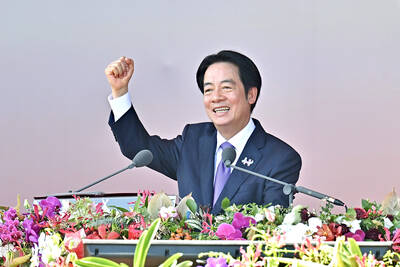
NATIONAL DAY: The ‘Taiwan Dome’ would form the centerpiece of new efforts to bolster air defense and be modeled after Israel’s ‘Iron Dome,’ sources said President William Lai (賴清德) yesterday pledged to strengthen the nation’s air defense capabilities and build a “T-Dome” system to create a safety net against growing military threats from China. “We will accelerate our building of the T-Dome, establish a rigorous air defense system in Taiwan with multi-layered defense, high-level detection and effective interception, and weave a safety net for Taiwan to protect the lives and property of citizens,” he said in his National Day address. In his keynote address marking the Republic of China’s (ROC) 114th anniversary, Lai said the lessons of World War II have taught nations worldwide “to ensure that